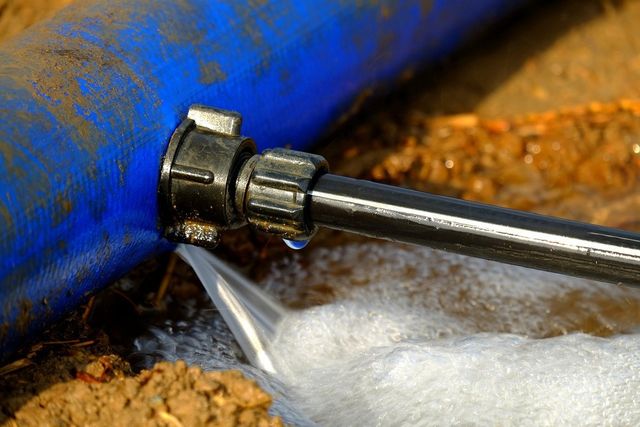This article which follows about Hacks to detect leaks is amazingly engaging. Don't skip it.

Early detection of dripping water lines can minimize a possible calamity. Some tiny water leaks might not be visible.
1. Examine the Water Meter
Every home has a water meter. Checking it is a proven way that aids you find leaks. For starters, turn off all the water resources. Make sure no one will purge, make use of the tap, shower, run the washing machine or dishwashing machine. From there, most likely to the meter as well as watch if it will alter. Because no person is utilizing it, there should be no movements. If it moves, that suggests a fast-moving leak. Furthermore, if you detect no changes, wait an hour or two and also inspect back once again. This indicates you may have a slow-moving leak that can even be underground.
2. Check Water Intake
Analyze your water bills and track your water intake. As the one paying it, you must notice if there are any kind of discrepancies. If you detect sudden changes, regardless of your consumption being the same, it means that you have leaks in your plumbing system. Bear in mind, your water costs must fall under the same range each month. An unexpected spike in your expense suggests a fast-moving leak.
A steady rise every month, also with the same habits, reveals you have a sluggish leakage that's additionally gradually escalating. Call a plumber to extensively check your building, especially if you feel a warm location on your floor with piping underneath.
3. Do a Food Coloring Test
When it comes to water usage, 30% comes from commodes. If the shade in some way infiltrates your dish throughout that time without flushing, there's a leakage in between the container as well as dish.
4. Asses Outside Lines
Do not neglect to examine your outside water lines as well. Needs to water seep out of the link, you have a loose rubber gasket. One tiny leak can lose lots of water as well as increase your water expense.
5. Examine the situation as well as inspect
House owners must make it a habit to inspect under the sink counters and even inside closets for any bad odor or mold and mildew growth. These two warnings suggest a leakage so punctual attention is needed. Doing regular evaluations, also bi-annually, can save you from a significant trouble.
If you recognize your residence is already old, keep a watchful eye on your heaters, hoses, pipelines etc. Look for stainings and damaging as the majority of pipelines as well as devices have a life span. They will certainly additionally naturally degrade as a result of tear and also wear. Do not wait for it to intensify if you think leaking water lines in your plumbing system. Call a professional plumber immediately so you don't wind up with an awful mess in your house.
Early discovery of dripping water lines can mitigate a prospective disaster. Some little water leaks may not be noticeable. Inspecting it is a proven way that aids you find leakages. One tiny leakage can throw away tons of water and spike your water expense.
If you believe dripping water lines in your plumbing system, don't wait for it to escalate.
WARNING SIGNS OF WATER LEAKAGE BEHIND THE WALL
PERSISTENT MUSTY ODORS
As water slowly drips from a leaky pipe inside the wall, flooring and sheetrock stay damp and develop an odor similar to wet cardboard. It generates a musty smell that can help you find hidden leaks.
MOLD IN UNUSUAL AREAS
Mold usually grows in wet areas like kitchens, baths and laundry rooms. If you spot the stuff on walls or baseboards in other rooms of the house, it’s a good indicator of undetected water leaks.
STAINS THAT GROW
When mold thrives around a leaky pipe, it sometimes takes hold on the inside surface of the affected wall. A growing stain on otherwise clean sheetrock is often your sign of a hidden plumbing problem.
PEELING OR BUBBLING WALLPAPER / PAINT
This clue is easy to miss in rooms that don’t get much use. When you see wallpaper separating along seams or paint bubbling or flaking off the wall, blame sheetrock that stays wet because of an undetected leak.
BUCKLED CEILINGS AND STAINED FLOORS
If ceilings or floors in bathrooms, kitchens or laundry areas develop structural problems, don’t rule out constant damp inside the walls. Wet sheetrock can affect adjacent framing, flooring and ceilings.
https://www.servicemasterbyzaba.com/blog/how-to-detect-water-leakage-in-walls/

We hope you enjoyed reading our topic on Detecting hidden plumbing leaks. Thanks for taking time to browse our piece. Please take a moment to promote this blog posting if you enjoyed reading it. Thank you so much for taking the time to read it.